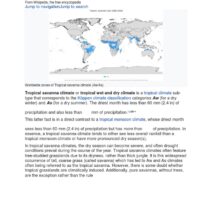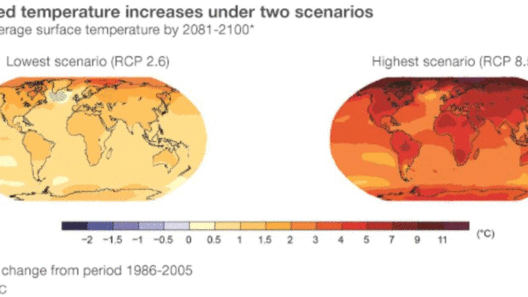Global warming has become a hallmark discussion of our times, laden with urgency. The ice caps are melting, sea levels are rising, and extreme weather events seem to be an annual occurrence. Yet, amidst this impending crisis, the question looms large: Is it possible to reverse the tide of global warming? This contemplation stirs a blend of hope and skepticism, inviting a deep dive into the complexities surrounding climate change and the feasibility of remedial actions.
As we navigate this discourse, it is crucial to understand the scientific principles underlying global warming. At its core, global warming refers to the long-term increase in Earth’s average surface temperature due, primarily, to the greenhouse gases emitted by human activities. This phenomenon disrupts ecosystems, casts shadows over biodiversity, and raises profound concerns regarding sustainability. However, the Earth possesses an innate resilience, leading to the tantalizing idea that it may be feasible to reverse this warming trajectory. But what mechanisms allow for such recalibration?
Pioneering Climate Engineering: A Double-Edged Sword
As the consequences of climate change continue to accumulate, innovative technological solutions are increasingly discussed. Climate engineering, often referred to as geoengineering, encompasses large-scale interventions in Earth’s natural systems. This field can be bifurcated into two primary categories: solar radiation management and carbon dioxide removal. The former strives to reflect a fraction of the sun’s rays back into space, while the latter focuses on reducing the carbon dioxide concentration in the atmosphere.
Proposals such as injecting aerosols into the stratosphere to reflect sunlight or afforestation initiatives, which involve planting vast forests to absorb CO2, have captured the imagination of scientists and policymakers alike. However, these methods are not without risks and ethical dilemmas. For instance, altering solar radiation could inadvertently disrupt weather patterns, affecting rain cycles and potentially exacerbating droughts in certain regions. This creates a bewildering paradox where the solution may spawn additional ecological challenges.
Moreover, there is a pervasive concern about the governance of such technologies. Who decides when to intervene in natural systems, and how do we ensure equitable outcomes? It raises the poignant question: in our quest to mitigate harm, could we inadvertently become stewards of a new crisis? Substantial deliberation and research are vital in assessing these technologies’ viability and potential ramifications.
Empowering Natural Solutions: The Role of Regenerative Practices
Turning our gaze away from high-tech solutions, we find that nature itself may offer a multitude of paths toward reversing global warming. Regenerative practices, which prioritize the restoration of ecosystems, are gaining traction as a viable alternative. These approaches facilitate carbon sequestration while simultaneously fostering biodiversity and enhancing soil health. Regenerative agriculture, for instance, emphasizes crop rotation, reduced tillage, and organic practices, yielding not only food but also healthier carbon-rich soil.
Another natural solution involves restoring wetlands, which serve as powerful carbon sinks. By revitalizing these ecosystems, we can significantly reduce atmospheric carbon while also providing habitats for wildlife. Reforestation and afforestation are equally critical, with trees acting as natural air purifiers and temperature regulators. The capacity for these practices to breathe life into our landscapes and reverse some of the damage inflicted upon our planet underscores the importance of aligning human activity with nature.
However, the dissemination of these practices also faces challenges, including economic and political barriers. Farmers may be resistant to adopting new techniques without adequate support, and land use policies often favor industrial agriculture, which can hinder the implementation of regenerative methods. Thus, a multifaceted approach that incorporates incentives for sustainable practices and education for stakeholders is essential to maximize these natural solutions’ potential.
Societal Shifts: The Global Responsibility
Reversing global warming necessitates not only technological innovations and natural solutions but also a profound cultural shift in our relationship with the environment. As climate change increasingly permeates public consciousness, we must cultivate an ethos that prioritizes sustainability at every level of society. This transition requires collective action, as individual choices ripple outward, influencing the broader societal fabric.
From grassroots movements advocating for systemic change to corporate accountability measures prioritizing environmental responsibility, the role of civic engagement cannot be overstated. Every decision, from political engagement to consumption habits, contributes to the broader tapestry of climate action. The rise of renewable energy sources, such as solar and wind power, showcases how consumer demand can drive significant changes in energy policies and industry standards. However, it remains crucial to balance environmental interests with economic considerations, ensuring that the transition toward sustainability is equitable and just.
The fascination with reversing global warming lies not only in its challenges but also in the avenues of hope it unveils. While the idea of turning back the clock appears daunting, it invokes a sense of responsibility and empowerment. Through imaginative solutions, both technological and natural, alongside a cultural renaissance in environmental stewardship, we may yet cultivate a future where harmony with our planet triumphs over discord. The quest for answers is an integral part of the human experience, imbuing our existence with purpose as we confront one of the most pressing issues of our era. Time is of the essence as we seek solutions to ensure a sustainable legacy for generations to come.








